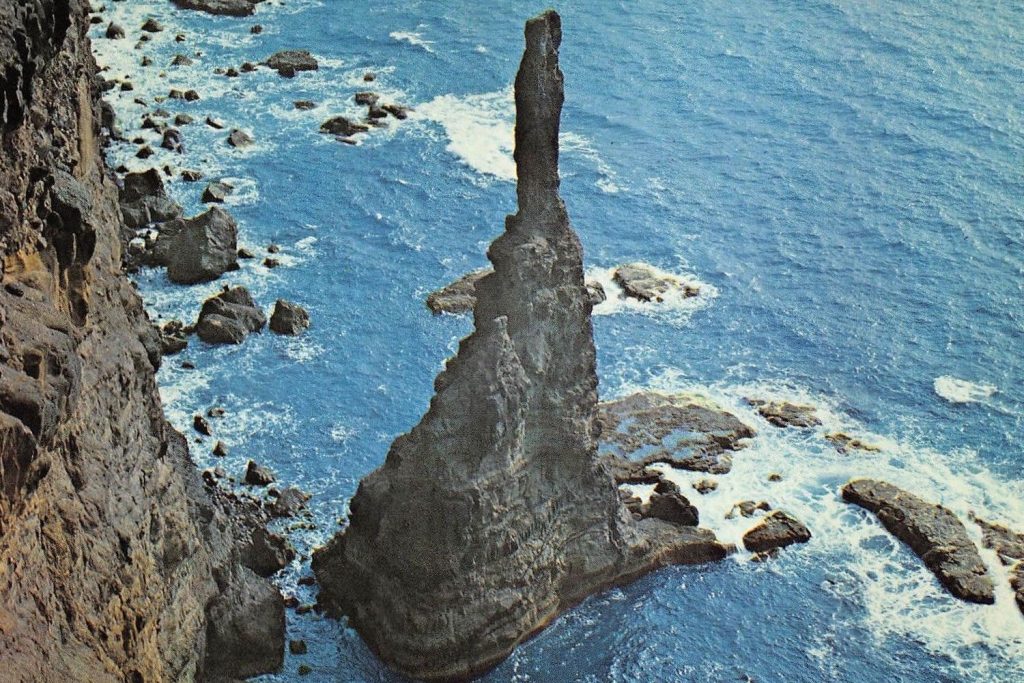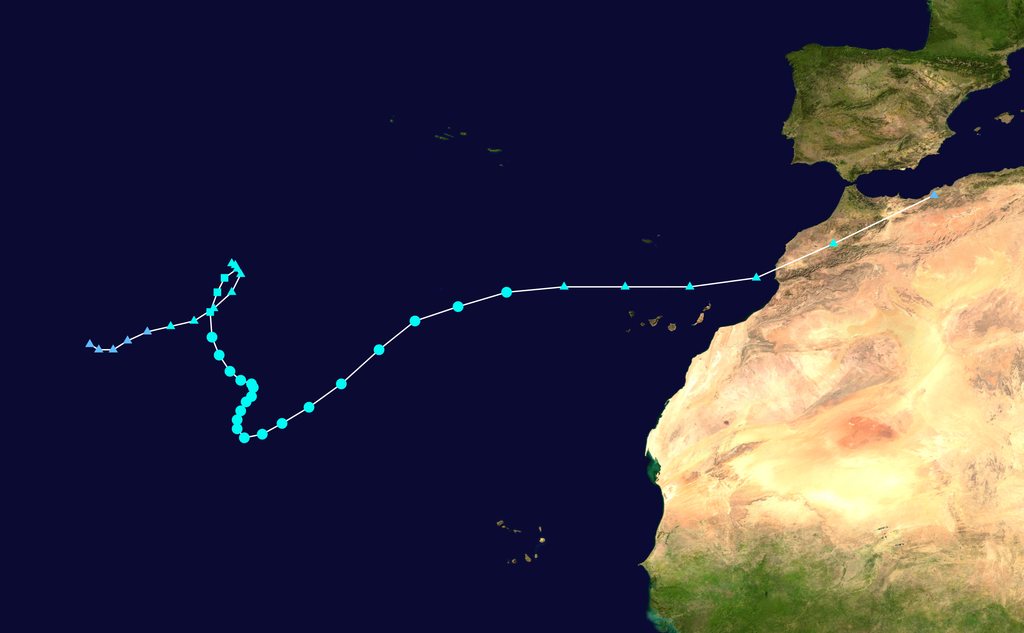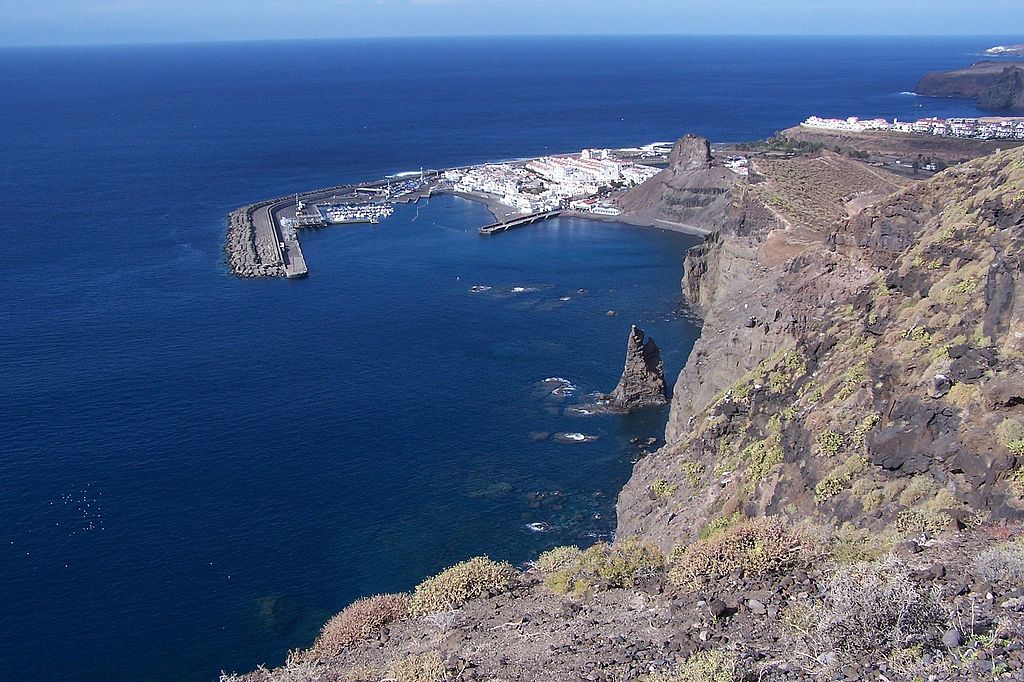If you were coming to Gran Canaria for the first time and had visited the most important locations on the island, we bet that you’d pick Agaete as one of the most picturesque towns of Tamarán –as the ancient aboriginal peoples called the island.
This small spot full of white houses has a typical coastal charming all over it, as it’s THE place to delight yourself with local sea delicacies that the Canarian food offers to the visitor every day of the year.
Puerto de las Nieves is the main and only port of Agaete, a municipality whose economy is based on fishing, agriculture (did you know that Agaete is the only place in Europe that produces coffee?) and beautiful rocky beaches.
But, apart from the famous festivity of La Rama (celebrated every 4th of August) that attracts thousands of party-goers, Agaete holds one of the (lost) symbol of Gran Canaria: the legendary Dedo de Dios.
What is the Dedo de Dios in Gran Canaria?
The Dedo de Dios (literally ‘God’s Finger’) is an about 30-metre high sea stack of rock located off the coast of Agaete in the Atlantic Ocean considered one of the many natural monuments of the Canary Islands.
Geologically, the area is the oldest on Gran Canaria, having started to form around 14 million years ago. Over a period of 200–300,000 years, the oddly shaped monument was created from the basaltic materials in the area.

Where is the Dedo de Dios?
The northwestern municipality of Agaete is home to the Dedo de Dios. It is specifically located at sea half a kilometre off the Las Nieves beach behind the famous Pinar de Tamadaba pine forest and next to the Risco de Faneque cliff and the Guayedra beach.
In other times when the rock had all its splendour, travellers from and to Tenerife (as Agaete is a hub with ferries that connect the main islands of the archipelago) could see it very close.
Agaete is located just 33 kilometres from Las Palmas de Gran Canaria and 83 kilometres from Maspalomas in the southern part of the island through a zigzagging road that passes across the towns of La Aldea de San Nicolás, Mogán and Puerto de Mogán (the southern rival of Agaete, also known as the Little Venice due to its canals).
Curiosities about the Dedo de Dios in Gran Canaria
Ok, you now know what the Dedo de Dios is and where is located, but let’s discover some facts about one of the most beautiful symbols of Gran Canaria.
1. Original name
This peculiarly shaped rock has been an inspiration to many artists, and it is believed that the author Domingo Doreste was the first to name it Dedo de Dios. But its original name is believed to be Roque Partido (Spanish for 'Broken Rock').
2. A dangerous spot
Back in 1976, two German climbers tried to reach the top of the Dedo de Dios. Local fishermen told them not to do it, as it is a dangerous area with an unexpected weather conditions. Indeed, navigating around it is a difficult task.
However, even though they had that information, they didn’t follow any indications and started the adventure. The bad weather took them offshore and one of them died in the event and the other was lucky enough to get to a nearby beach.
3. Natural disaster

The month of November of the year 2005 witnessed the arrival of the Tropical Storm Delta, a late-forming tropical storm of the Atlantic hurricane season which struck the Canary Islands as a strong extratropical storm, causing significant damage in the process.
Like most late-season storms, it developed out of an extratropical low and gradually moved erratically for a few days before moving towards the Canary Islands. It hit the Dedo de Dios and broke it, cutting off its finger.
Discover the Dedo de Dios and enjoy Agaete
Although the Dedo de Dios nowadays resembles a fist (maybe God’s Fist?), Agaete has plenty of things to offer. Spending a day in this charming sea village is one of the best plans you can do…
Don’t miss the opportunity to taste the Canarian gastronomy with fresh products such as the papas arrugadas con mojo picón (wrinkled potatoes with spicy sauce) or local fishes like the vieja, the cherne or the sama, among others.
Furthermore, Agaete has one of the best natural swimming pools in Gran Canaria: Las Salinas. Here you can enjoy a different beach day in the clear and fresh water of the Canary Islands.
What are you waiting for to discover the Dedo de Dios in Gran Canaria? Come and get to know on of the symbols of the island.

